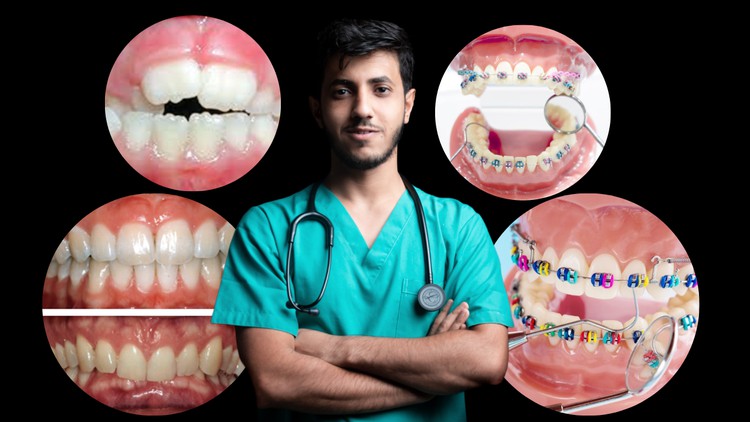Basic Orthodontic Course : From A - Z Part 1

Why take this course?
📚 Basic Orthodontic Course: From A - Z Part 1
🎉 Course Title: Basic Orthodontic Course: From A - Z 🚀 Course Headline: Terminology, Introduction to Orthodontics, Etiology of Malocclusion, Class I, Class II Division 1, Division 2, Class III
🤝 What is Orthodontics? Orthodontics is a specialized field within dentistry that focuses on:
- Facial growth, including the development of the jaws and facial bones.
- Development of the dentition, which involves the proper alignment and eruption of the teeth.
- Occlusion, ensuring the bite is correctly aligned, where the upper and lower teeth fit together.
- Treatment of occlusal anomalies, correcting any misalignments or irregularities in the bite.
📊 Demand for Treatment While a high demand for orthodontic treatment exists, it doesn't always reflect a clinical need. Treatment is more sought after by:
- Females
- Higher socio-economic families/groups
- Communities with better accessibility to orthodontic care.
It's interesting to note that some patients are very conscious of even mild tooth misalignments, while others may be unaware of more significant issues.
📏 Classification of Crowding Crowding is classified as:
- Mild: Less than 4 mm
- Moderate: 4-8 mm
- Severe: More than 8 mm
Understanding the degree of crowding helps in planning effective treatment strategies.
🔍 Etiology Of Malocclusion We will delve into the various causes of malocclusion, including:
- Variation in facial types, occlusion, and malocclusion.
- Skeletal relationships, understanding how the jaws relate to each other.
- Aetiology, which is the study of the causes of diseases. Identifying and addressing these etiological factors are crucial for successful treatment outcomes.
🦷 Ideal Occlusion vs. Malocclusion
- Ideal Occlusion: This is characterized by perfectly aligned teeth where all surfaces of the teeth meet correctly.
- Normal Occlusion: Deviations from the ideal, but still functional and not requiring treatment.
- Malocclusion: Positional disturbances of the teeth that necessitate orthodontic intervention.
📋 Classification of Etiology of Malocclusion includes:
- Genetically Inherited factors, such as:
- Failure of eruption of upper central incisor due to presence of supernumerary tooth, with the tuberculate type being most common.
- Skeletal patterns, tooth size, and number of teeth.
- Genetic predispositions that can influence the shape of the nose, the smile, and other facial features, which may be hereditary.
- Conditions like the "Hapsburg jaw," a class III skeletal abnormality, seen in the German royal family.
By understanding the genetic, developmental, and environmental factors that contribute to malocclusion, orthodontists can tailor treatments to individual patient needs, resulting in improved oral health, function, appearance, and self-esteem. 😊
Join us on this journey through the fascinating world of orthodontics and discover how you can make a difference in the lives of those seeking a beautiful, healthy smile! 🌟
Loading charts...